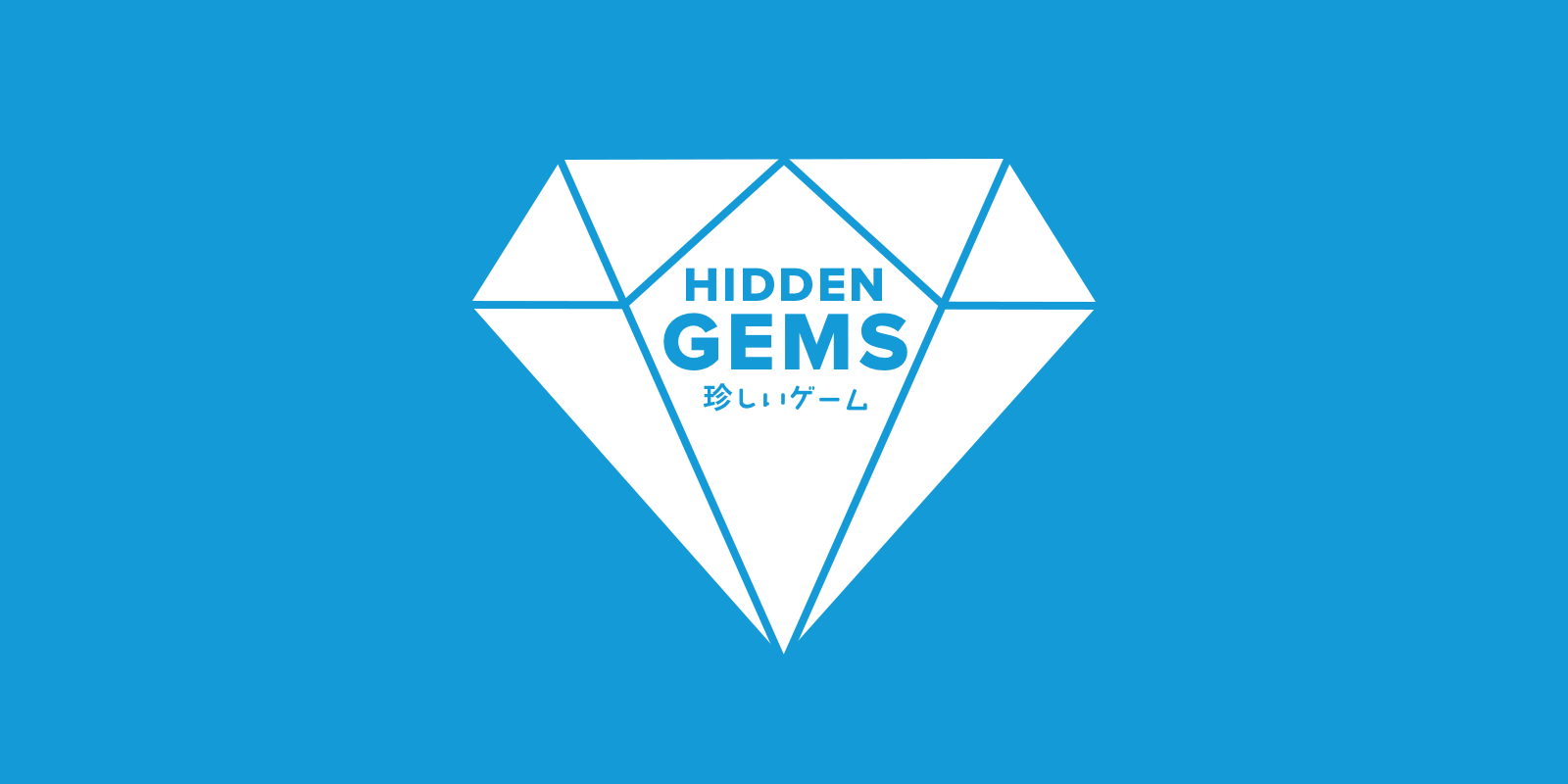Hidden Gems of Game Design: Volume 3
Our team is back with another set of games that deserve more attention than they get

There are plenty of amazing games that go unnoticed and are not played for one reason or another. Maybe it's a diamond in the rough, or the marketing wasn't there, or it could be a game ahead of its time. For this monthly series, I've asked my fellow writers on SUPERJUMP to pick a game they think is deserving of a chance in the spotlight. Let us know your favorite hidden gems in the comments.
Josh Bycer
Super Daryl Deluxe (2018)

Some of my favorite games are from the Metroidvania genre, and many will probably show up in future entries. For this month, we have one of the most inventive and off-the-wall takes that very few people have played or even heard about. Super Daryl Deluxe is a combination of Napoleon Dynamite and the 90s, all thrown into a Metroidvania blender. You play as Daryl, a quiet student starting his first day at high school, but there are some weird things going on. The vice principal is a robot, there is a textbook mafia, the world may have been destroyed in the apocalypse, and there are dimensional portals to parallel worlds in the major classrooms.
The story starts out weird and gets even more so over the course of play. Each day is broken up by having to complete tasks and explore the halls of the school as Daryl. The aesthetics and enemy designs look like something someone could draw in a notebook, with your notebook acting as the game’s menu.
Combat is based on equipping different powers for Daryl. Those powers are broken down by type, and the kind of damage they do. As you play, you can buy more powers and upgrade the ones you like to increase their effectiveness. Gear can be acquired that can give you special modifiers and perks, or make it easier to fight certain enemy types. The creativity and imagination of the developers are on full display in this game - just look at the picture I chose for the game up top.
Now for the customary depressing part of my entries; why didn’t this game do well? Super Daryl Deluxe was a Kickstarter success story, which could mean that a lot of the people who played this game backed it and weren’t able to leave reviews to affect Steam’s algorithm. From a branding standpoint, the game doesn’t really have anything in terms of widespread appeal. Contrast this to the Bloodstained Kickstarter and release that had Koji Igarashi as the director.

From a gameplay standpoint, Daryl has a few sticking points to it. The school and the various dimensions are very maze-like in their design. As the game goes on, more areas become open to you, which makes it that much harder to remember where certain things were or where events trigger. This is a game that is built very linearly on event triggers to open up new areas, move the story along, etc. If you miss one or don’t talk to the correct NPC, good luck trying to remember where you had to go. The pacing in the prologue and chapter 1 are slow, and most likely led to the huge amount of churn among consumers. Chapters tender to meander along, and you don’t get that sense of excitement or build-up before a big encounter. The progression can be summed up with “borrow money from Peter to pay Paul” where every quest has you going to someone else who has a quest that takes you somewhere else and eventually everything works out.
As a Metroidvania, in my opinion, the game would be middle-of-the-road in terms of the design components of the genre. While you do get a variety of attack options, the actual new tech that changes how you play is pretty few and far between. Equipment has a clear hierarchy in terms of power progression – and anything that gives you lifesteal will become vital in the final quarter of the game. One final pain point, the game does not feature any checkpoints whatsoever – if you die before you return to a save point, all that progress is gone.
All in all, Super Daryl Deluxe is a game that is more about the style than the substance. I think it’s a fantasticly different take on Metroidvanias, trading fantasy and horror for high school, sneakers, and textbooks. And just like Ironclad Tactics last month, it has an amazing theme song.
Ben Cantrell
Arcus Chroma (2019)
It’s always refreshing when a game emerges in an established genre that offers a refreshing spin on the formula. In this case, we have a promising new indie fighting game called Arcus Chroma, and the refreshing spin is the removal of jumping. Of course, this isn’t the only innovation, as it also offers a satisfying combo-focused attacking system and an intuitive control scheme. But it’s the removal of jumping that makes the gameplay feel focused and satisfying.
Developed primarily by solo-dev GxGrainSon and a small team of collaborators, Arcus Chroma is an indie fighting game brimming with personality and potential. While the game is available right now on Itch.io for both PC, Mac and Linux, it’s still technically ‘in development' and is a little rough around the edges. Despite the lack of polish, the core gameplay foundation is solid and the game is certainly worthy of standing next to more established franchises in the fighting game conversation.
As with any fighting game worth its salt, the core moment-to-moment gameplay will make or break the experience. Thankfully, Arcus Chroma delivers by streamlining the traditional fighting game formula through the removal of a long-thought stalwart in any fighting game - the ability to jump. Instead, holding or tapping up while pressing any of the attack buttons will trigger an upward or lunging attack, depending on the character. In the same vein, holding down will also modify attacks. There’s also a dodge button that will cause your character to spin around the opponent and attack from the opposite direction, and a burst button that unleashes an explosion of energy when the meter fills up.
Every character has a light, medium and heavy attack which are modified based on their respective size, speed, and power stats. One aspect I love is the implementation of the special moves and supers. All characters perform these moves in exactly the same way - for those familiar with Ryu or Ken’s Hadouken and Hurricane Kick from the Street Fighter series then you’ll already know exactly how to perform them. By combining either light or medium attack buttons, a standard special move is performed such as fireball or combo. However, by waiting until the super bar is full and performing the same move with the heavy attack button, a super is performed which usually results in a devastating chain combo.
So while all special moves and supers are performed the same way, the variation is still large due to the differing stats for each character, along with their abilities. Some characters wield swords or throw projectiles, while others rely on brute strength. By simplifying the move-set, the barrier of entry is lowered for new players, and it’s easier to experiment with new characters. This approachability combined with tight controls and a penchant for long chain-combos positions Arcus Chroma as a potential heavy-hitter for fighting game newcomers and veterans alike.
The game’s presentation is original and refreshing, with a Street Fighter meets Dead Cells vibe, colorful well-animated pixel art characters, interesting backgrounds, and smooth animation. The music too is catchy, featuring a serviceable mix of traditional fighting game fare along with some nice drum ’n’ bass and electronica. There’s a noticeable lack of menu sound effects and other adornments, but this is to be expected from a game from such a small development team.
There are occasional bugs and missing features too. For example, there are some frame stutters on the macOS version, and the menus are still unfinished. But none of these take away from the brilliance of the actual gameplay, and shouldn’t deter those considering giving Arcus Chroma a try. In its current state, the game offers three modes - a training mode, along with versus modes against both the CPU and local multiplayer. Sure, it’s bare bones, but the essentials are all here.
Arcus Chroma is an indie fighting game with big potential. It’s easy to pick but hard to master and is ripe for success within the larger fighting game community. In an exciting piece of news, a sequel was recently announced which will hopefully see the game reach an even larger audience. but I’m hoping the ‘unpolished yet charming’ original continues to get updated too. As far as indie fighting games go, Arcus Chroma is undoubtedly a hidden gem and is certainly worthy of its modest €6.00 asking price. If you like innovative fighting games and want to support a talented new developer, I highly recommend checking this out.
Lucas Di Quinzio
The Dadish Series (2020)

The Dadish series, three 2D platformers released annually since 2020 by New Zealand dev Thomas K Young, are an unassuming set of games, to say the least. You play as Dadish - that’s a radish that is also a dad - as you run, jump and double jump around to rescue your little radish kids at the end of each level. And running and jumping is all you are doing - this is a series without a deep move set or some kind of central gimmick. It hasn’t got a unique art style or much of a narrative or the promise of masochistic difficulty. They are just three plain platformers. Three really good plain platformers.
I’m going to be honest, I dismissed Dadish, to begin with. B`ut after a glowing write-up from merritt k at Fanbyte, I decided to give it a go and I am glad I did (it’s almost like regularly putting a spotlight on quality small titles is a great thing, eh, eh). Dadish clearly adheres to the Super Mario school of platforming. They all have clean, bright pixel art with amusing enemy designs - they’re all different kinds of junk food, from flying pizza slices to exploding soda cans.
The Mario design philosophy of introducing an idea and getting the player to master it over the course of a level is deployed effectively throughout the series. Each game has 50 levels with short levels that will take 1-2 minutes to successfully run through, and the constant drip feed of new enemies, obstacles, and useful objects really drive you forward. I kept going ‘okay, one more level’ until credits rolled. If that’s not a sign of a well-made game, I’m not sure what it is.

This series has a sense of humour about it, as well. Each level ends with a short exchange of dialogue between Dadish and his kid. Despite starring a dad, there are few dad jokes, mostly little bits of banter. Sometimes there are comments on the level just completed, sometimes it breaks the fourth wall, and sometimes it’s a possum instead. They hit more than they miss, which certainly makes these exchanges act as a reward for completing each level.
The Dadish series proves that you don’t necessarily need to reinvent the wheel to succeed if you can absolutely nail the fundamentals. That’s exactly what Thomas K Young has been doing for three years straight, and I hope he keeps on going.
Antony Terence
AquaNox 2: Revelation (2003)

Massive Entertainment’s submarine franchise was recently revived by THQ Nordic with AquaNox Deep Descent (2020). But before that, publisher JoWood’s sunk treasures included AquaNox 2: Revelation, whose in-game engine was so impressive it served double duty as a benchmarking tool. AquaNox 2 tosses you headfirst into murky underwater battles and fires torpedoes at you from all 3 dimensions.
Minus the lack of sea life and land, the decaying world of Aqua lends itself to some impressive dogfights.
Its eerie atmosphere, whose orchestral mix is dismissed by sniper shots, keeps one on their first-person rudders through each mission. While the game’s mediocre story and forgettable characters do hold it back, its four purpose-built submarines play incredibly well with nuanced combat and controls.
Floating about with the intentionally wonky control scheme adds to AquaNox 2’s mysterious charm. Over-steering and course-correcting are core tenets of the experience.
True, piloting one of these as a kid felt like a chore, especially since I had to rely on the 3D map more than my eyes. Each weapon has its uses and the level design ensures that some stages favor the nimble Salty Dog over heavy bomber Mighty Maggie. Enemy submarines make use of this expansive arsenal as well, from stationary turrets to frigates and snipers that maneouver in and out of cover.
Missions, despite being easy to get lost in, are thankfully short and feature a variety of objectives. Boss fights are tension-inducing because one needs to get past weaker foes again to face them, Dark Souls-style. While it isn’t a trailblazer in the sim space, AquaNox 2 is a title that deserves more attention from sim fanatics.


